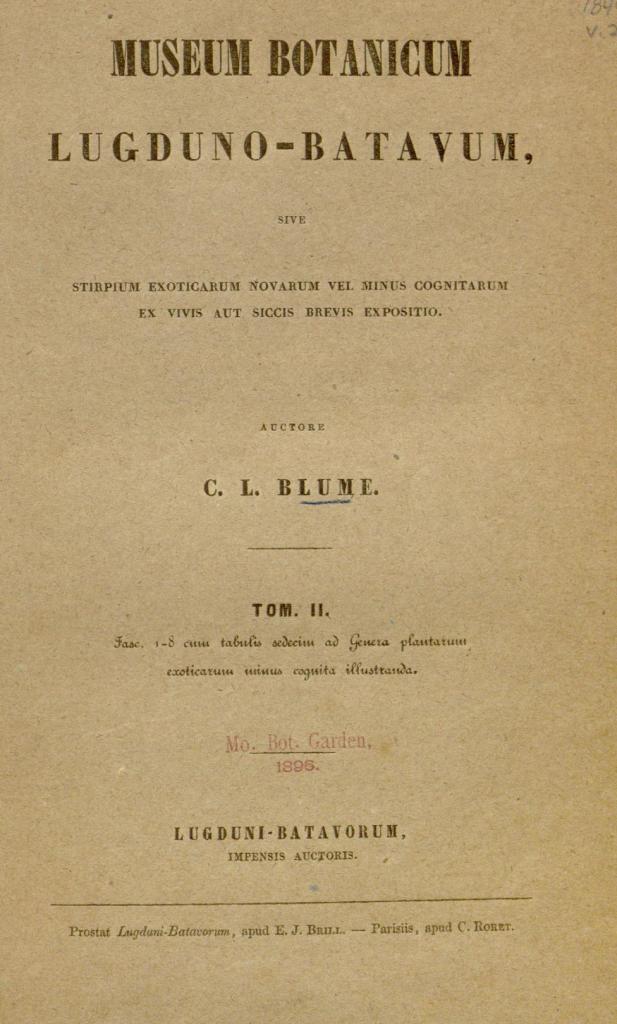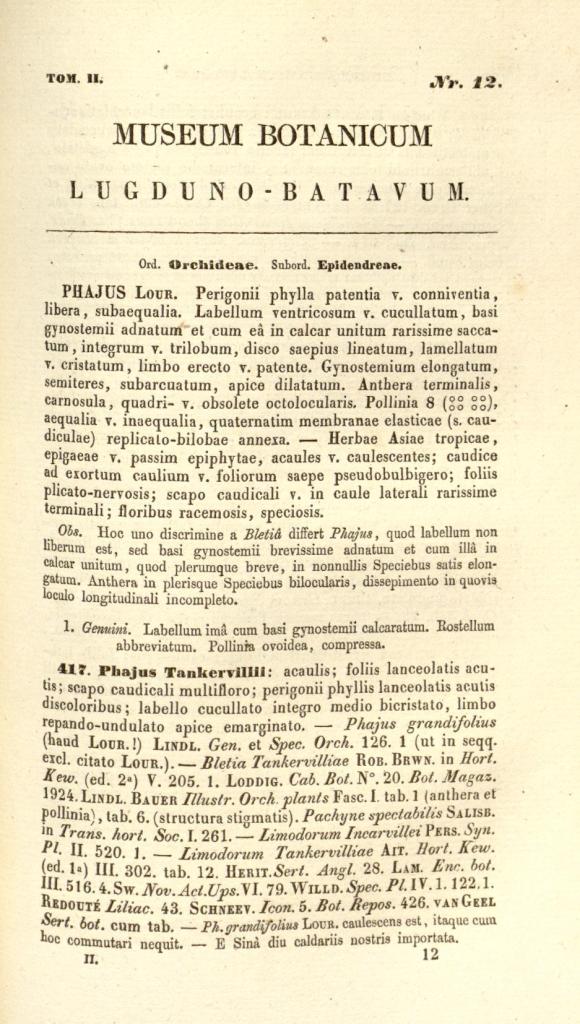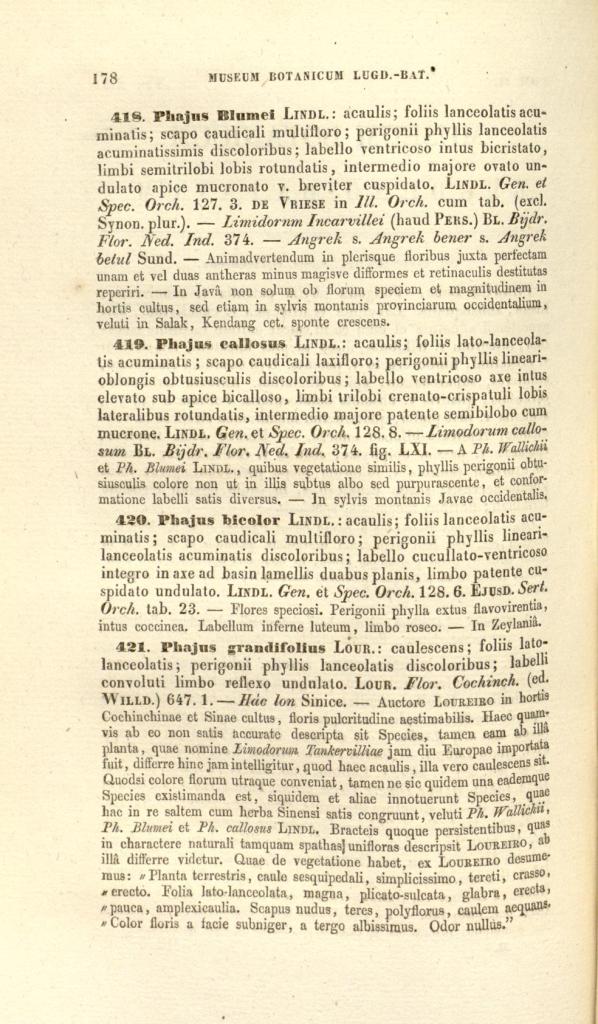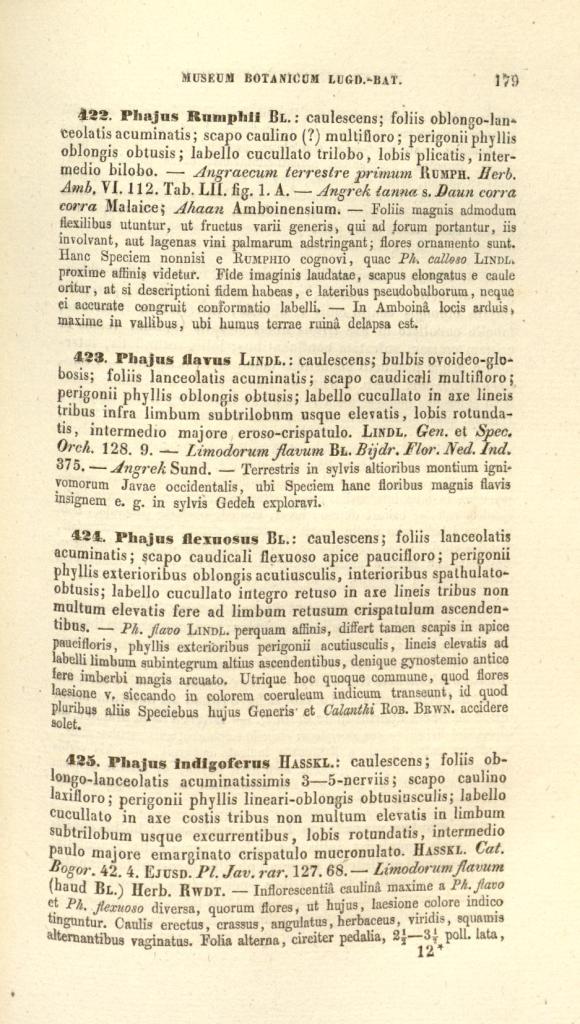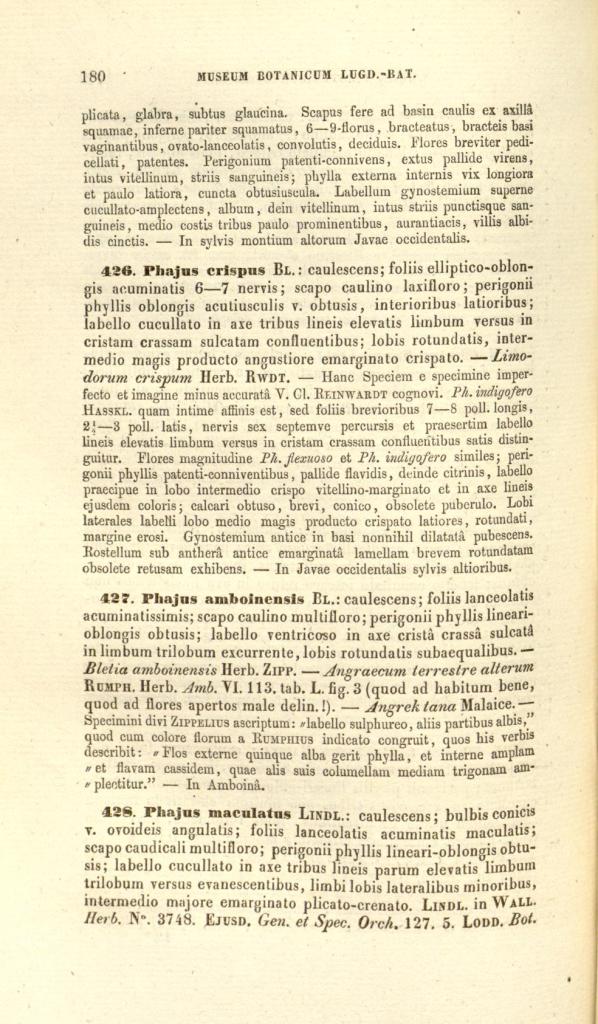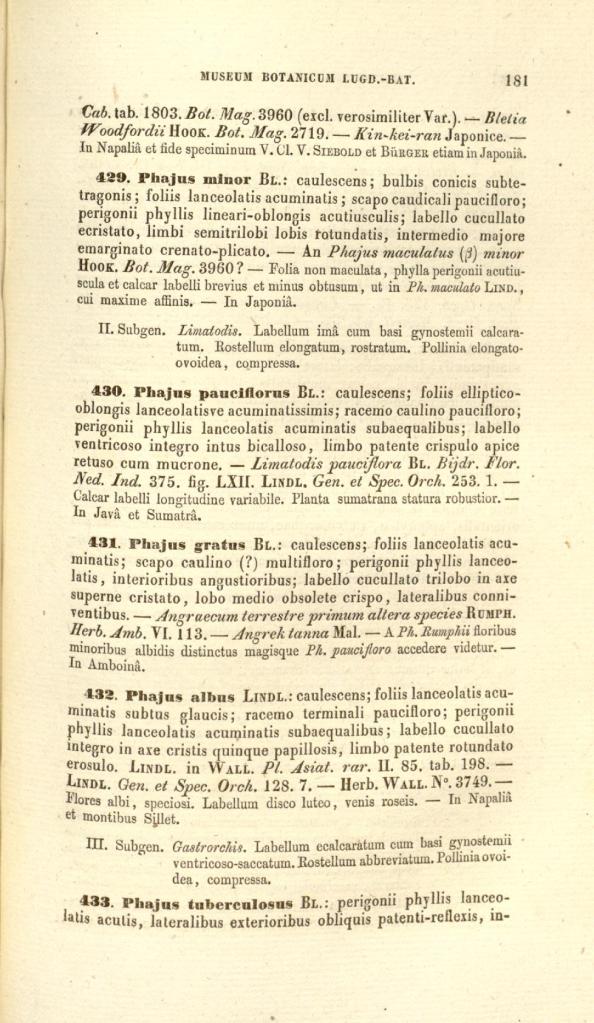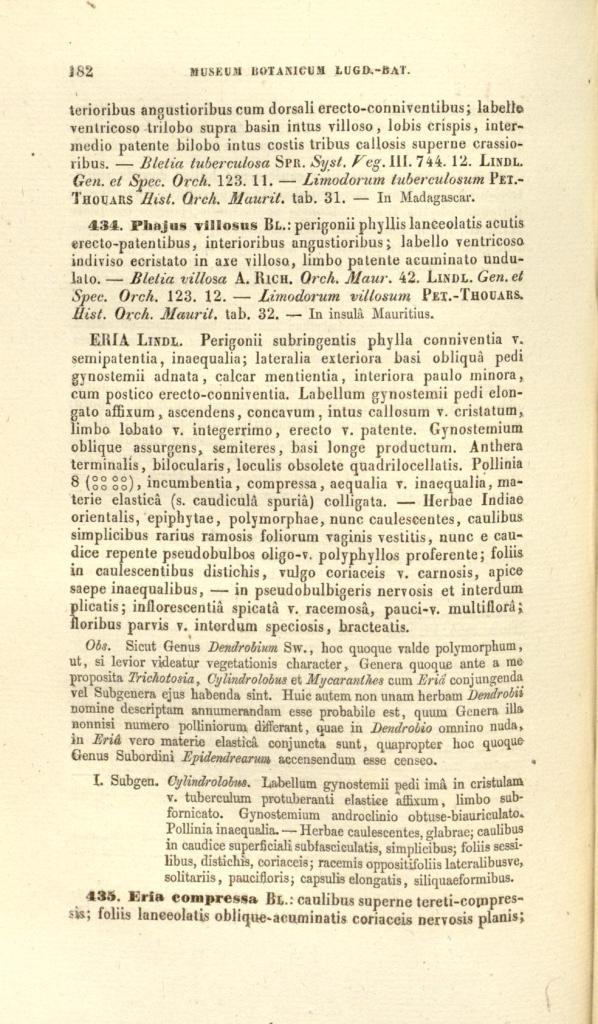Four years ago I launched this blog to collect all kind of informations concerning Phaius and related genera. Today we travel back in history to have a closer look at the historical roots of the genus Phaius.
1787 the first drawing of a Phaius tankervilleae was made by Sowbery. The unique quality of this drawing easily allows to identify the depicted species.
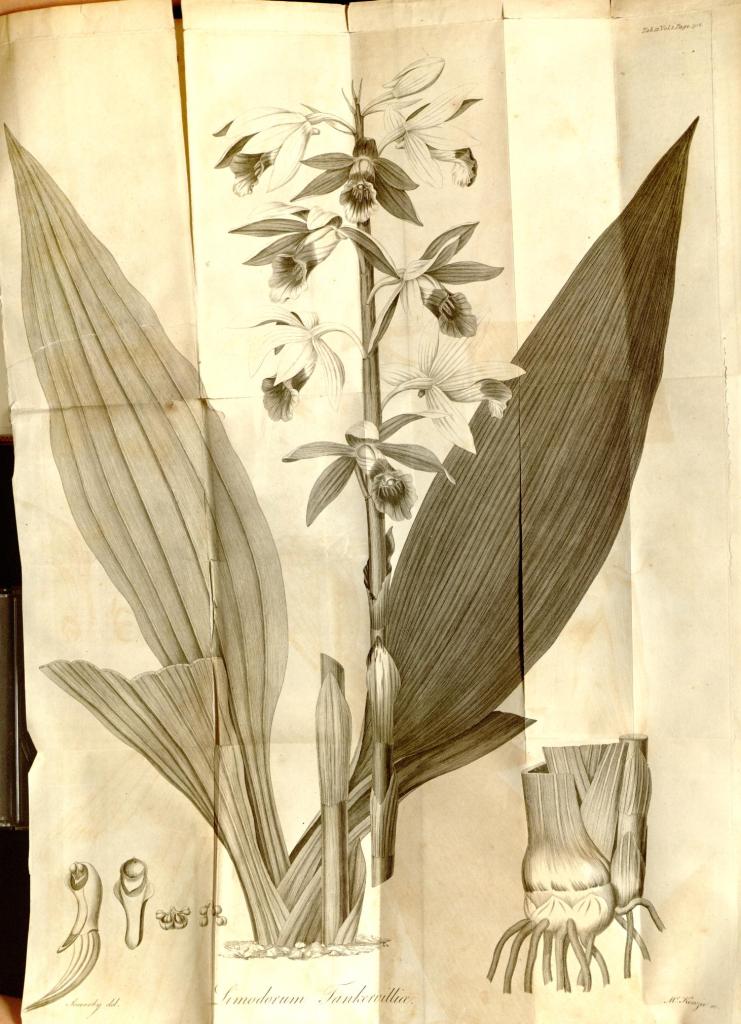
Note the short spur that distinguishes Phaius tankervilleae from Phaius wallichii
It was published in 1789 by William Aiton in his Hortus Kewensis volume 3 on table 12 as an engraving by MacKenzie from Sowbery’s original drawing.
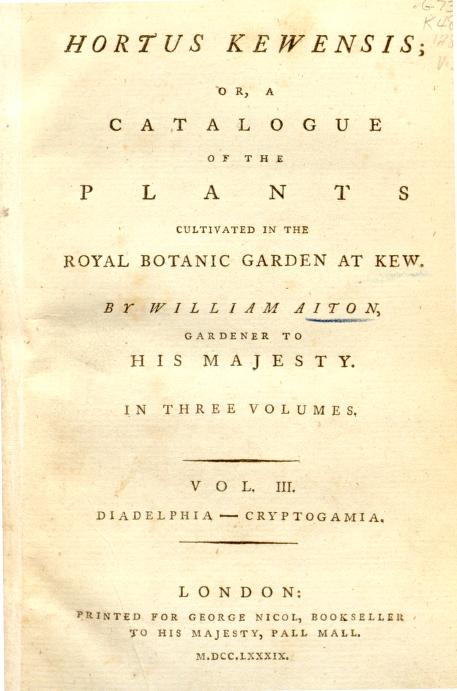
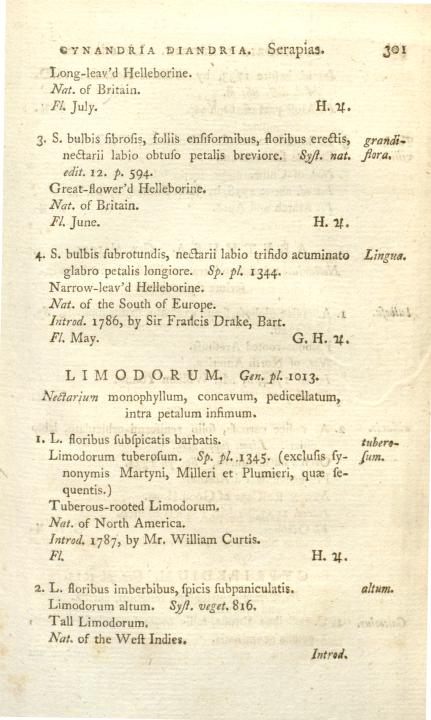
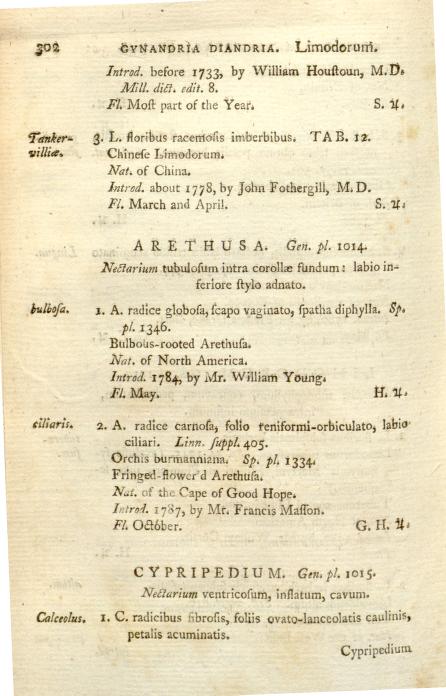
In 1788 the french botanist L´Hértier published a short descrition of Phaius tankervilleae in his Sertum Anglicum on page 28:
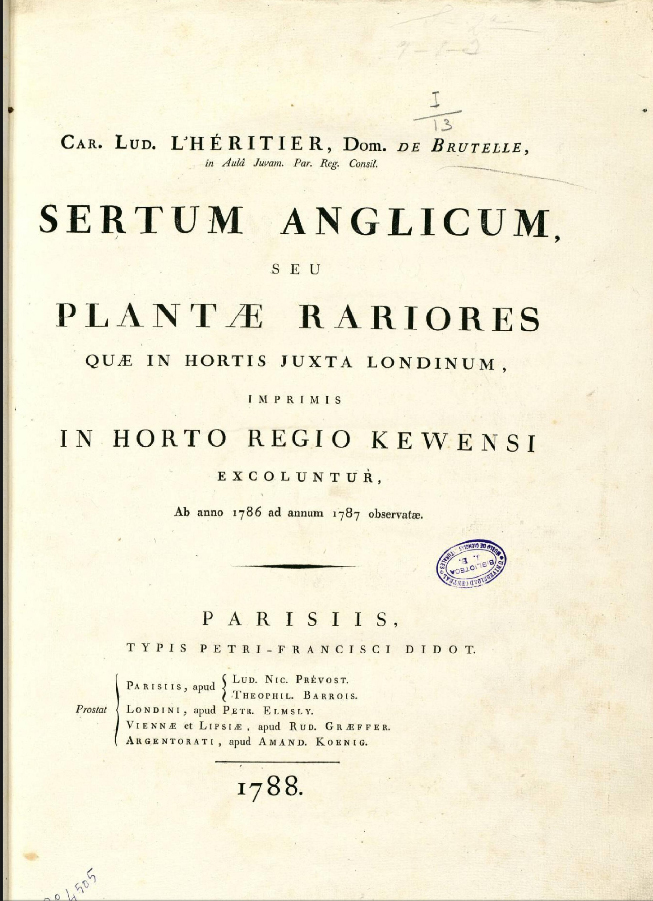
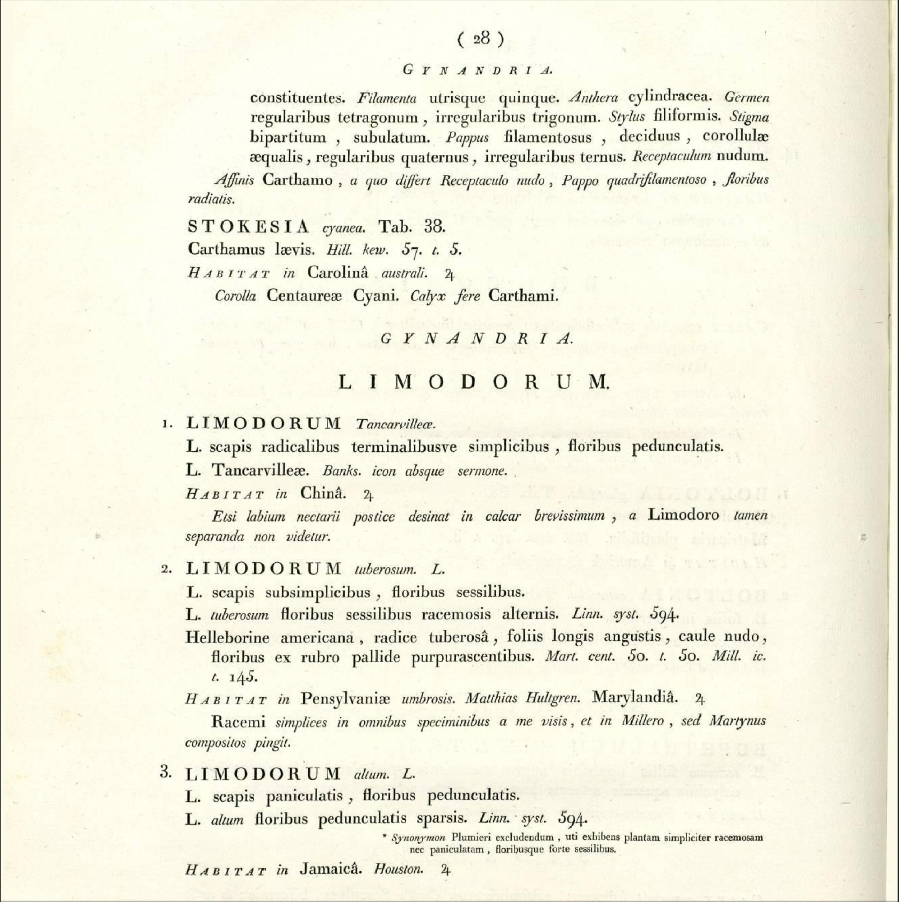
It was Joannis de Loureiro who introduced the genus Phaius in 1790 in his Flora Cochinchinensis.
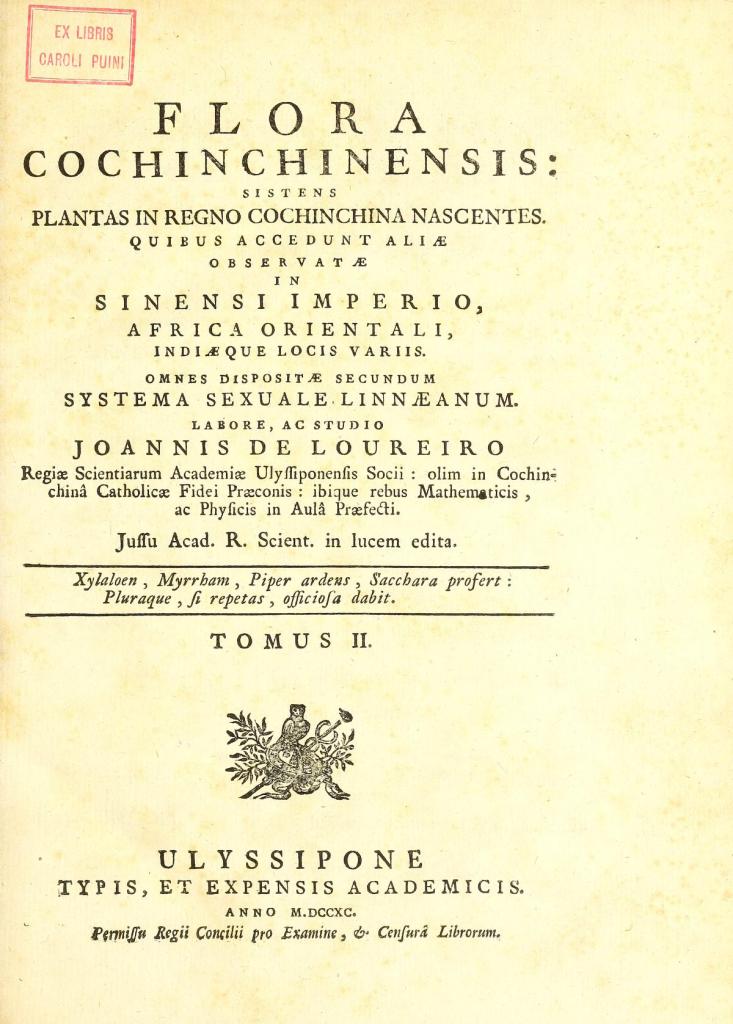

 phaios fuscus, which means dark brown. As it is not known how the described type specimen of Phaius grandifolius looks like it is unclear wether the described species is a Phaius tankervilleae or a Phaius wallichii. In general Phaius grandifolius is treated as a synonym of Phaius tankervilleae.
phaios fuscus, which means dark brown. As it is not known how the described type specimen of Phaius grandifolius looks like it is unclear wether the described species is a Phaius tankervilleae or a Phaius wallichii. In general Phaius grandifolius is treated as a synonym of Phaius tankervilleae.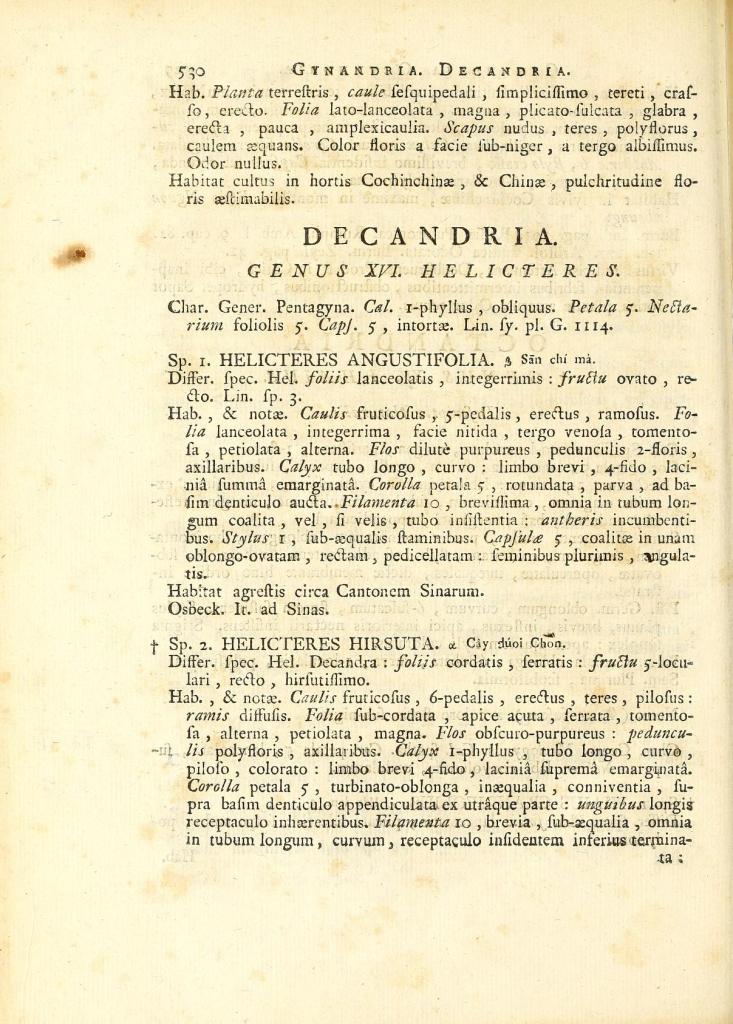
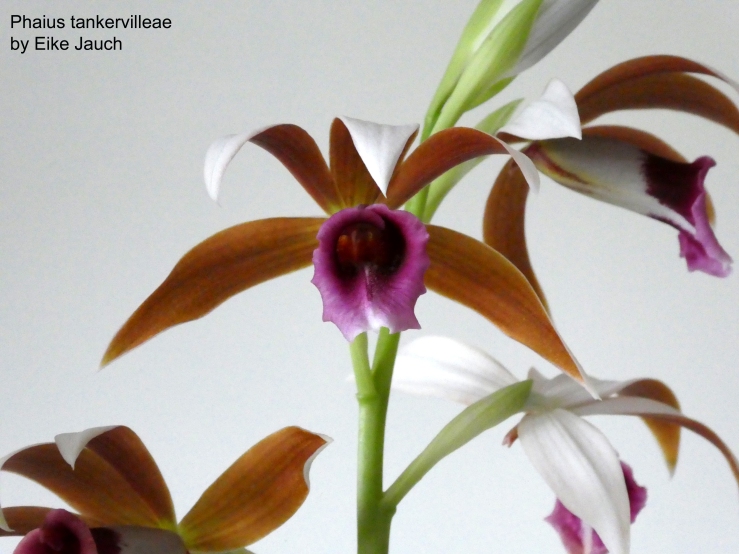
In 1807, Peerson introduced in his Synopsis Plantarum the name Limodorum Incarvillei to honour Father Pierre Nicolas Le Chéron d’Incarville, a French Jesuit and amateur botanist.
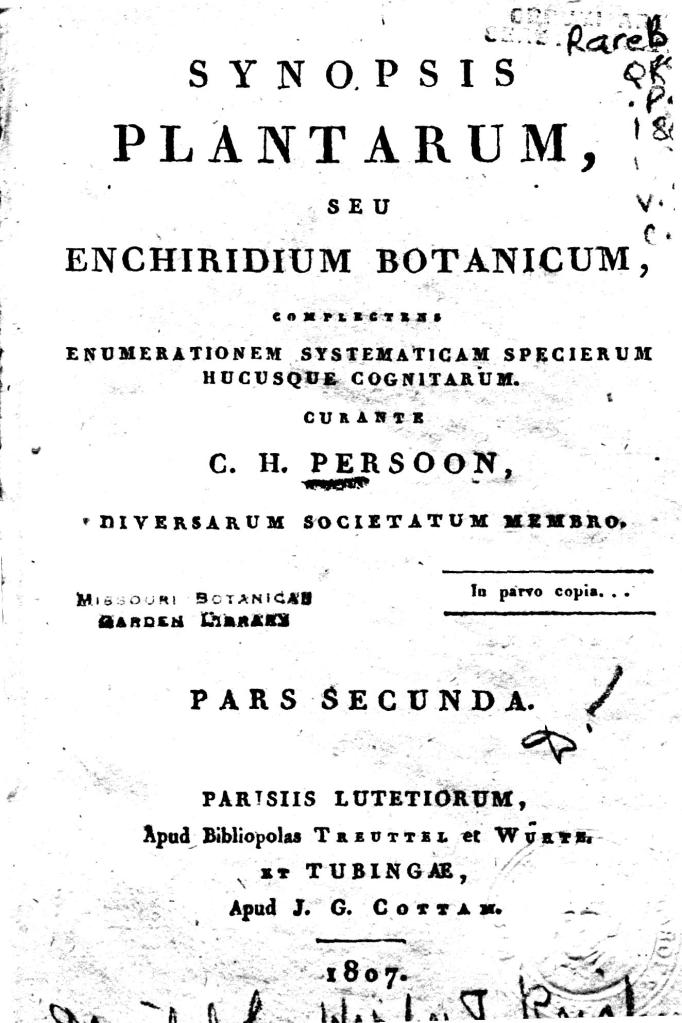
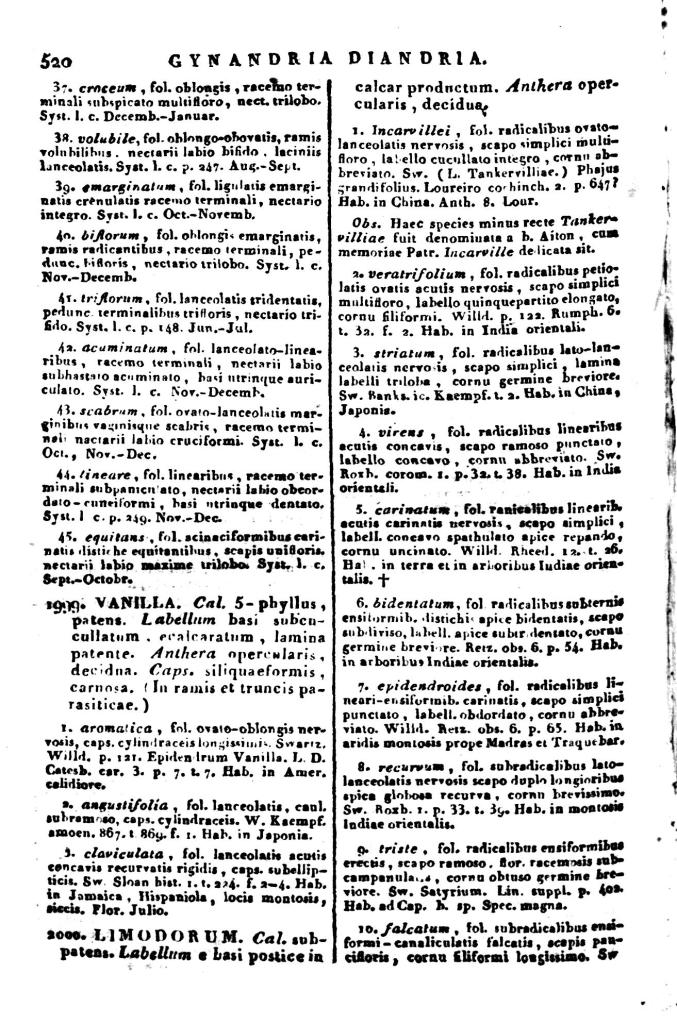
In 1812 Richard Anthony Salisbury used in Transactions of the Horticultural Society the name Pachyne Spectabilis when he wrote about the historical background of Phaius tankervilleae.
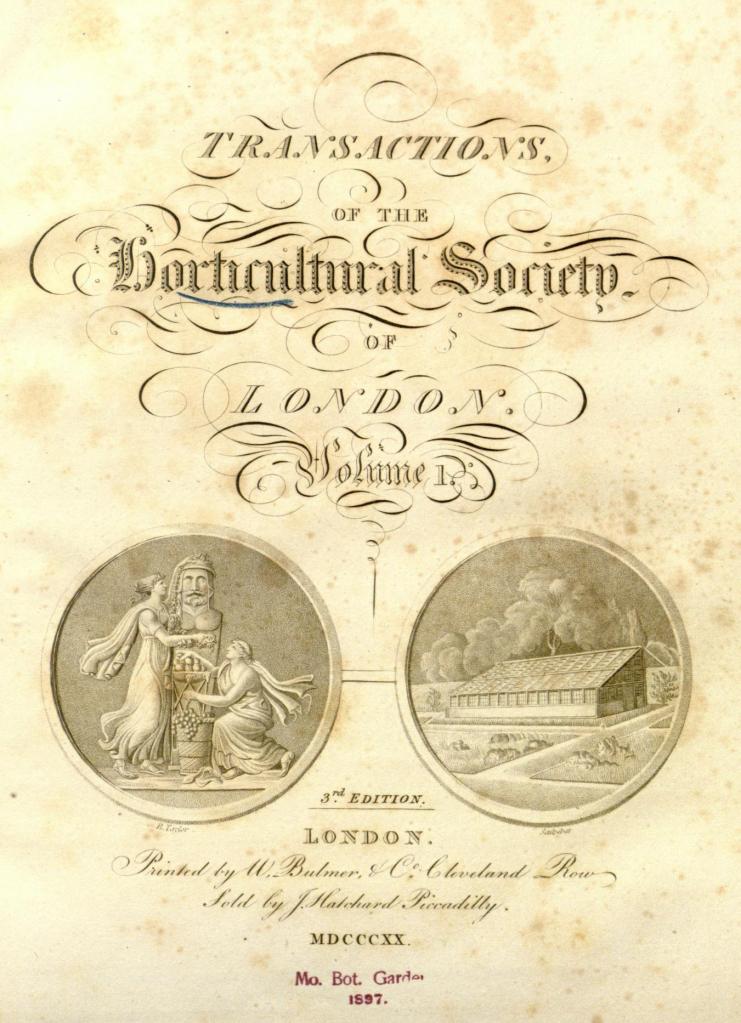
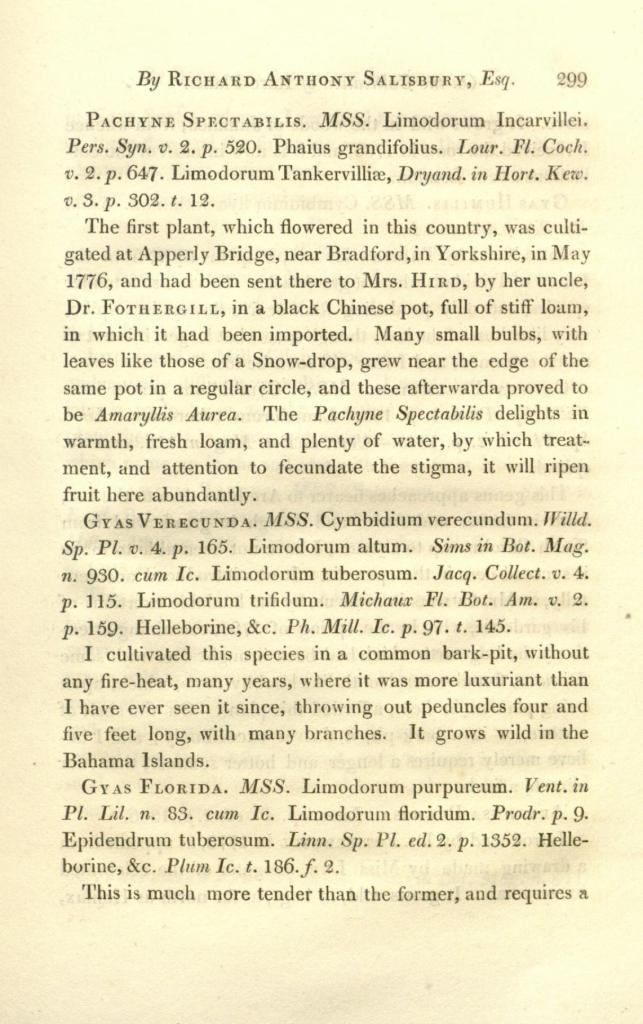
In 1917 Phaius tankervilleae was published as Bletia Tankervilliae in Curti’s Botanical Magazine. This artice tells part of the story behind this beautyful Phaius.
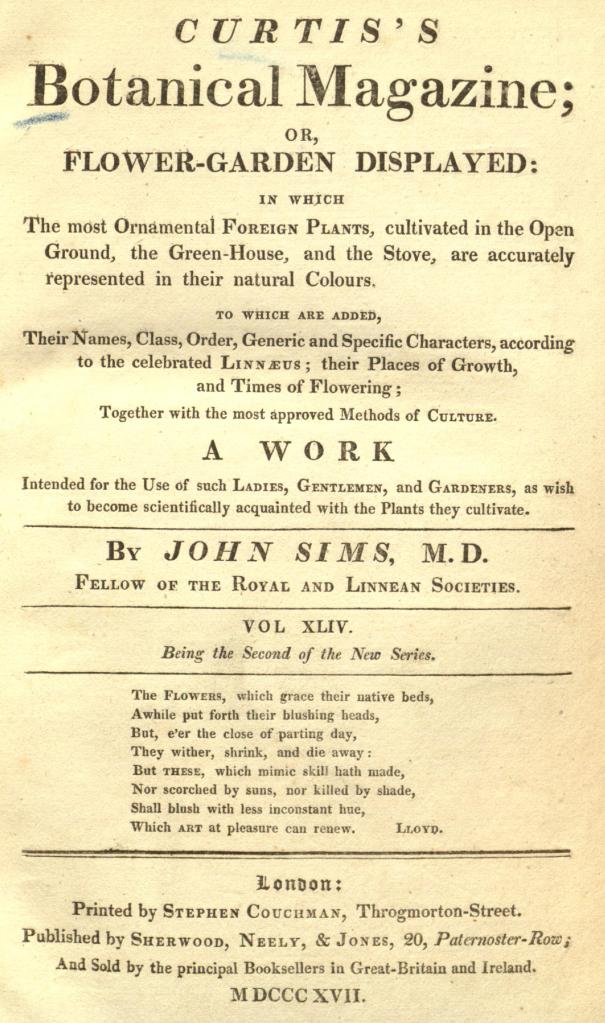
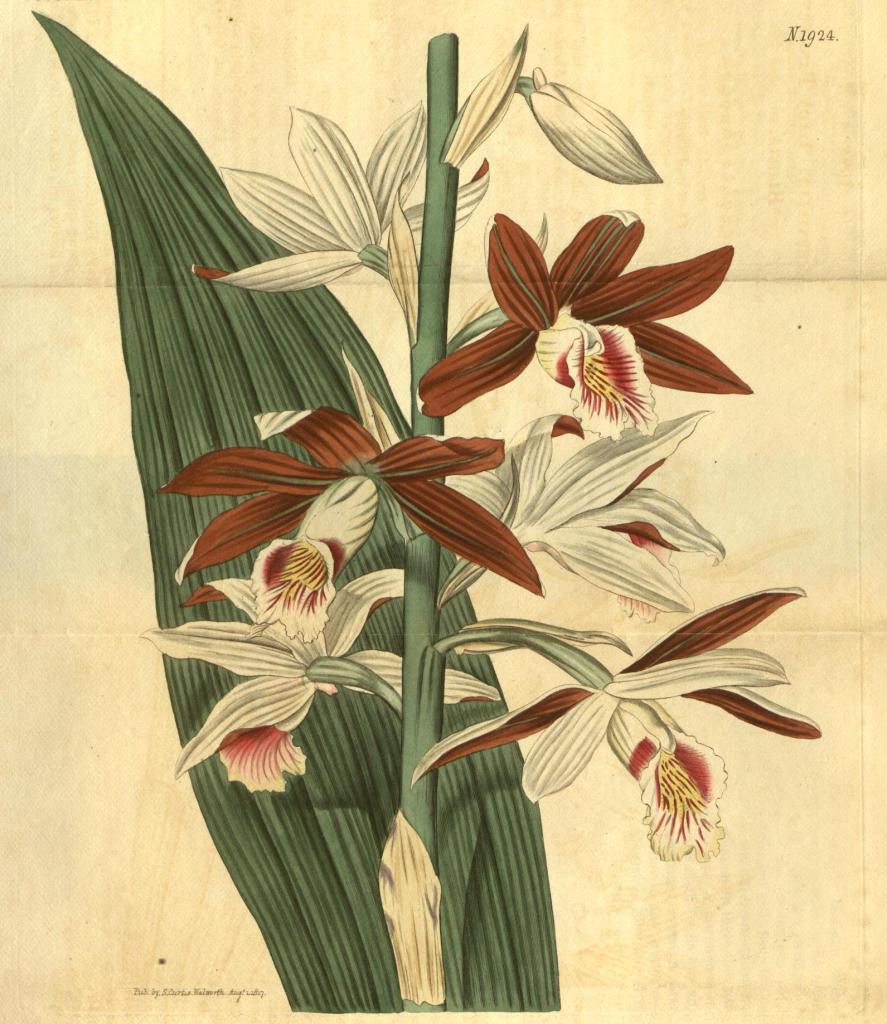
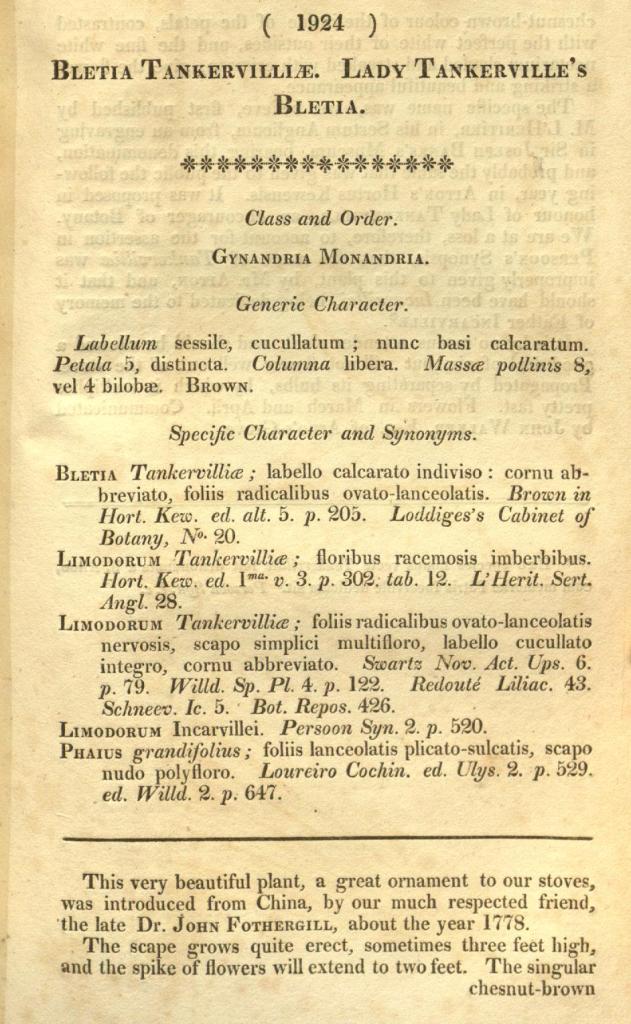
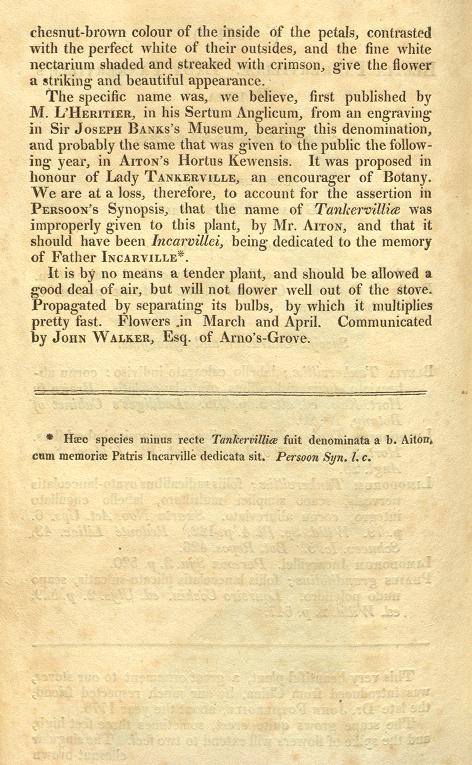
Conrad Loddiges also used 1817 the name Bletia Tankervilliae in his Botanical Cabinet:
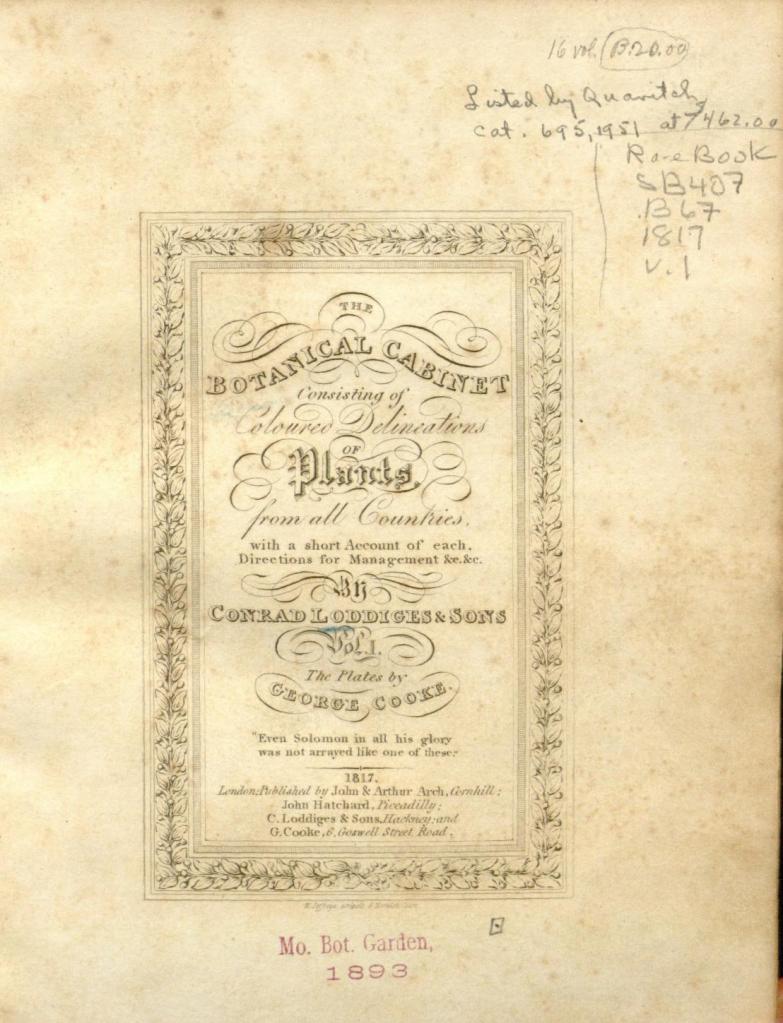
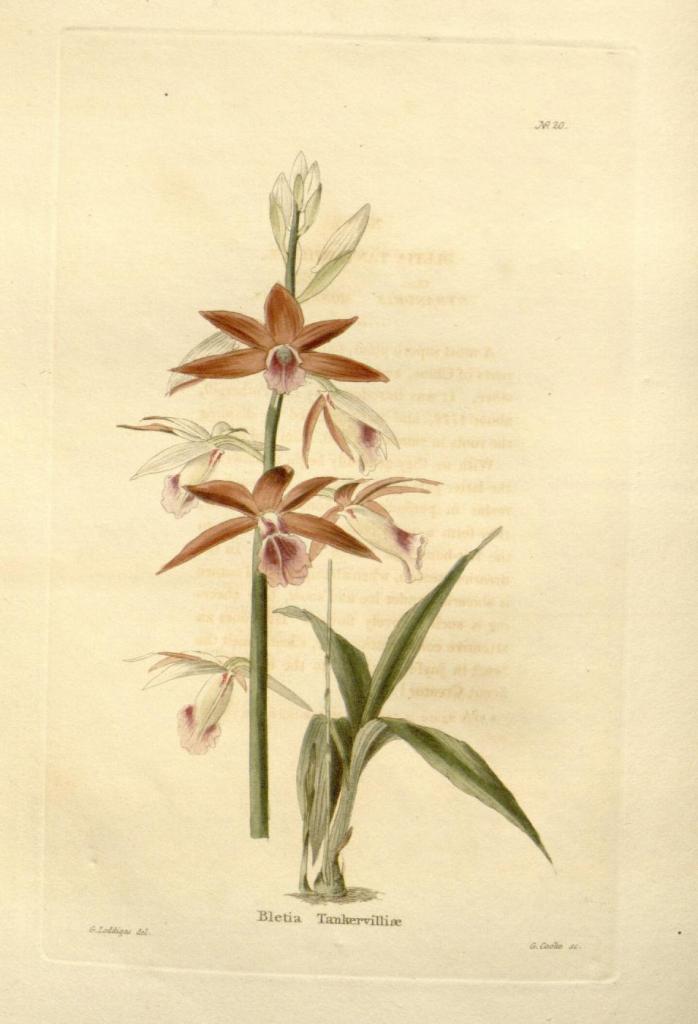
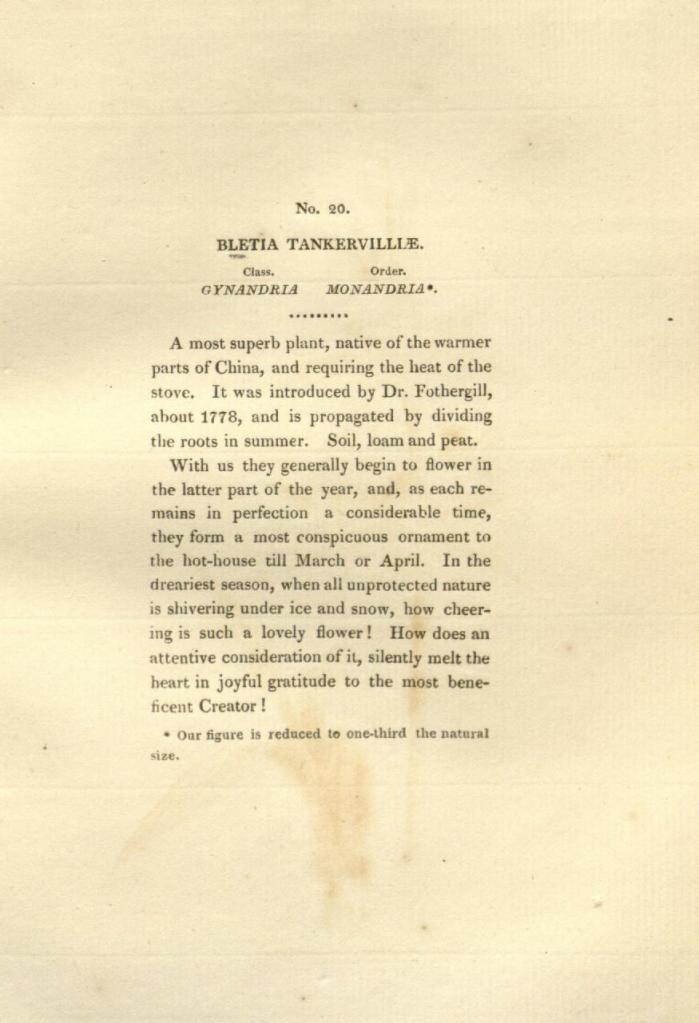
In 1825 Carl Ludwig Ritter von Blume used the name Limodorum Incarvillei in his Bijdragen tot de Flora van Nederlandsch Indië.
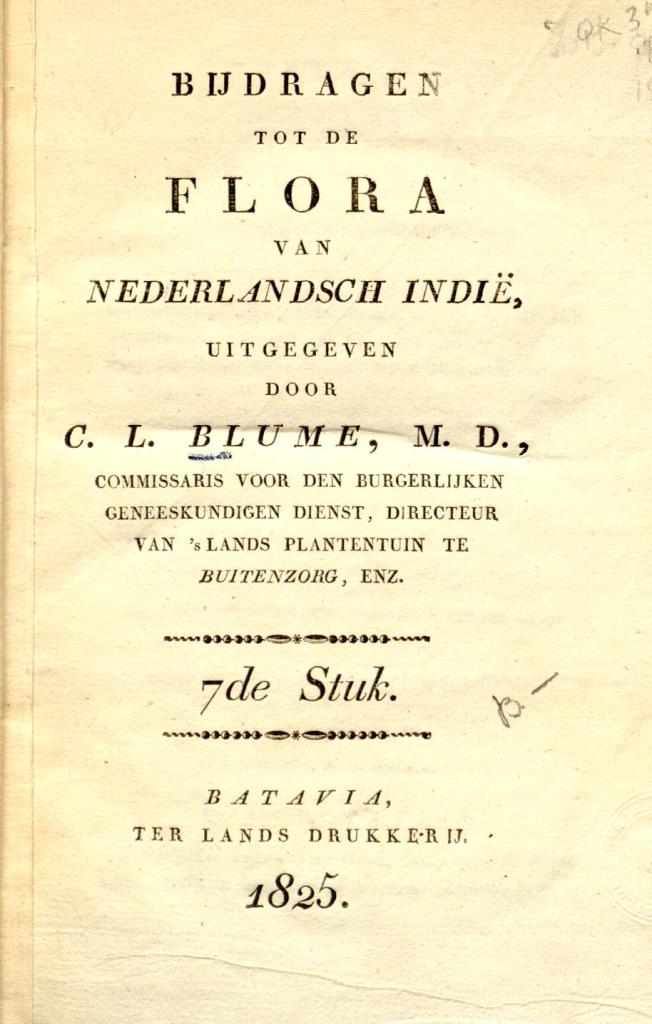
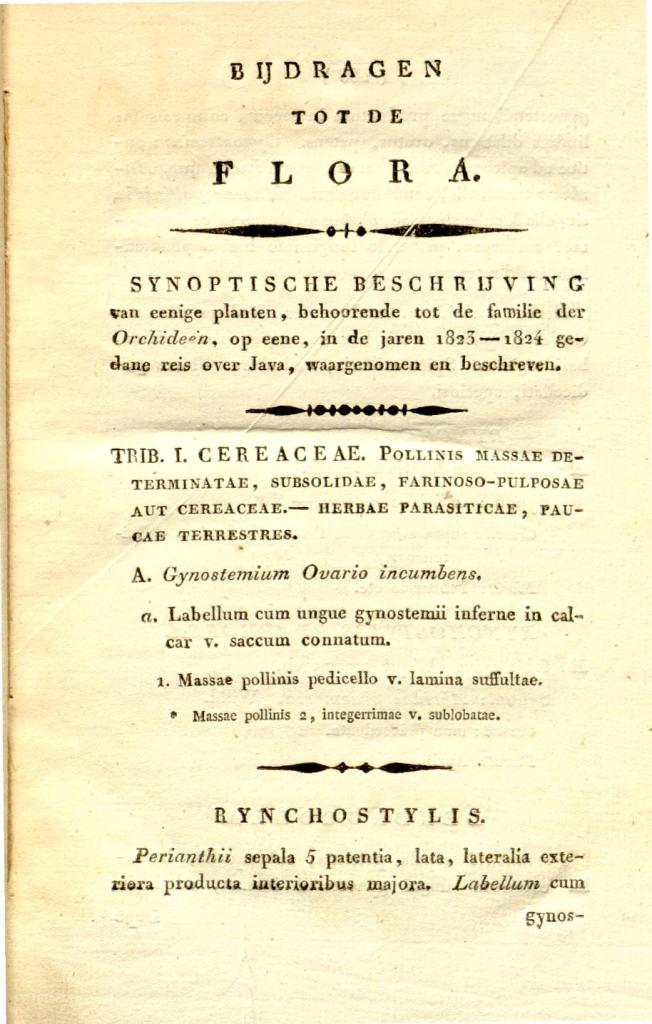
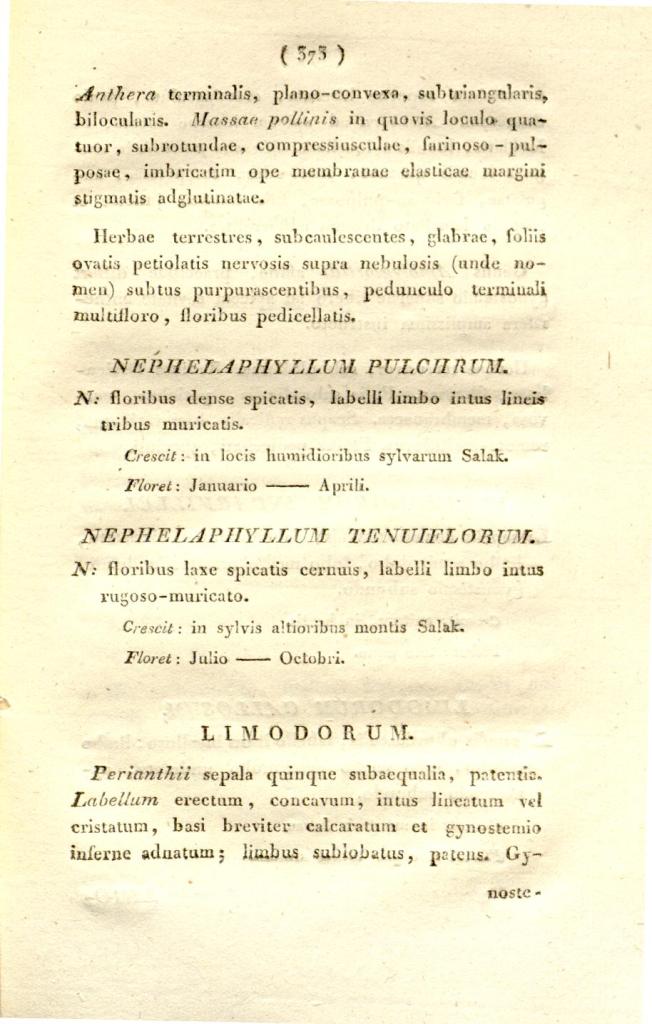
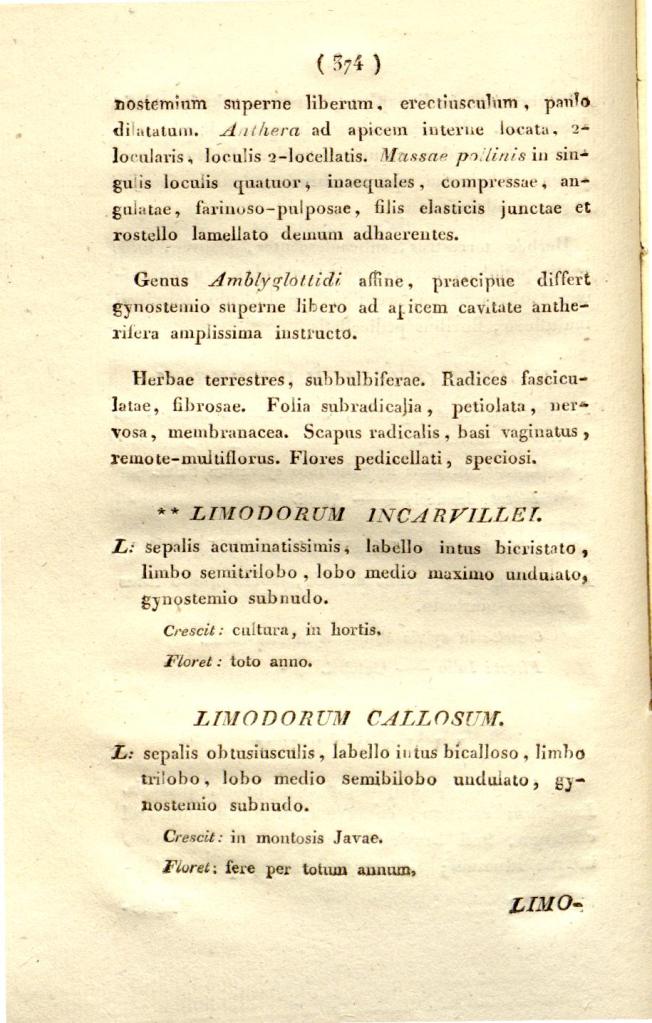
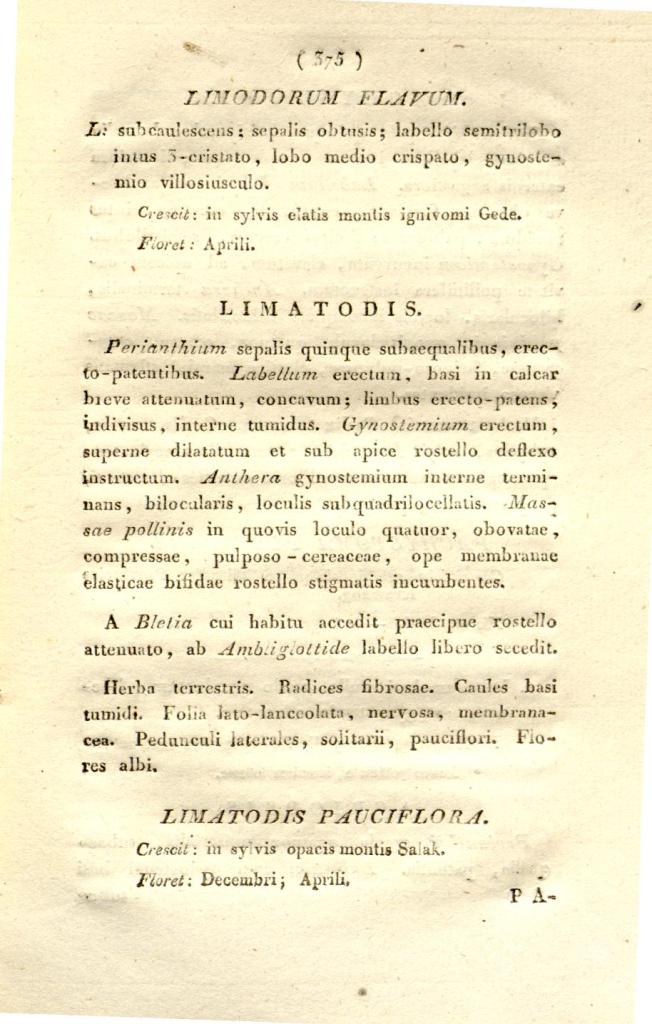
In 1831 John Lindley used the name Phajus grandifolius in his Genera and Species of Orchidaceus Plants:
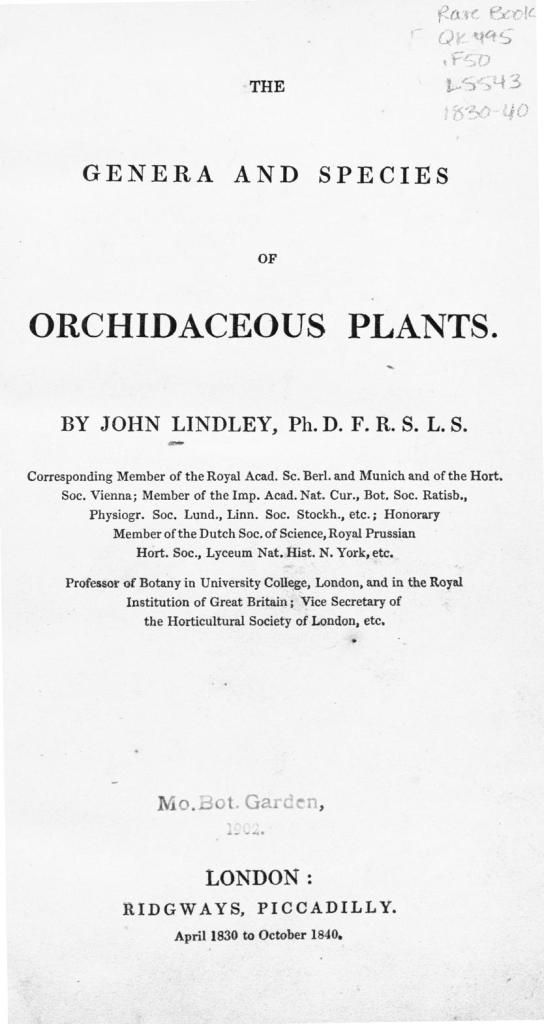
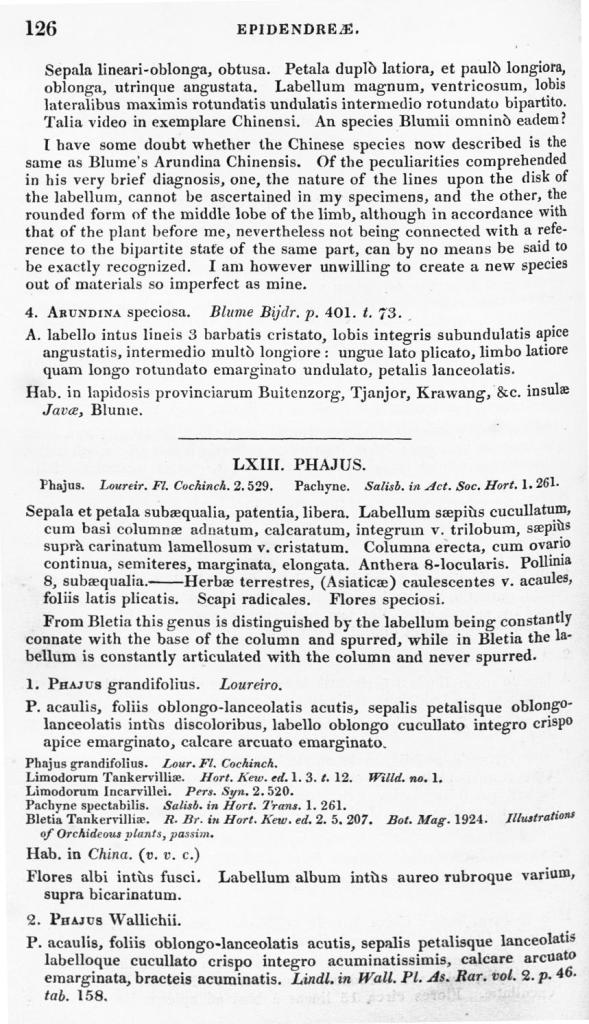

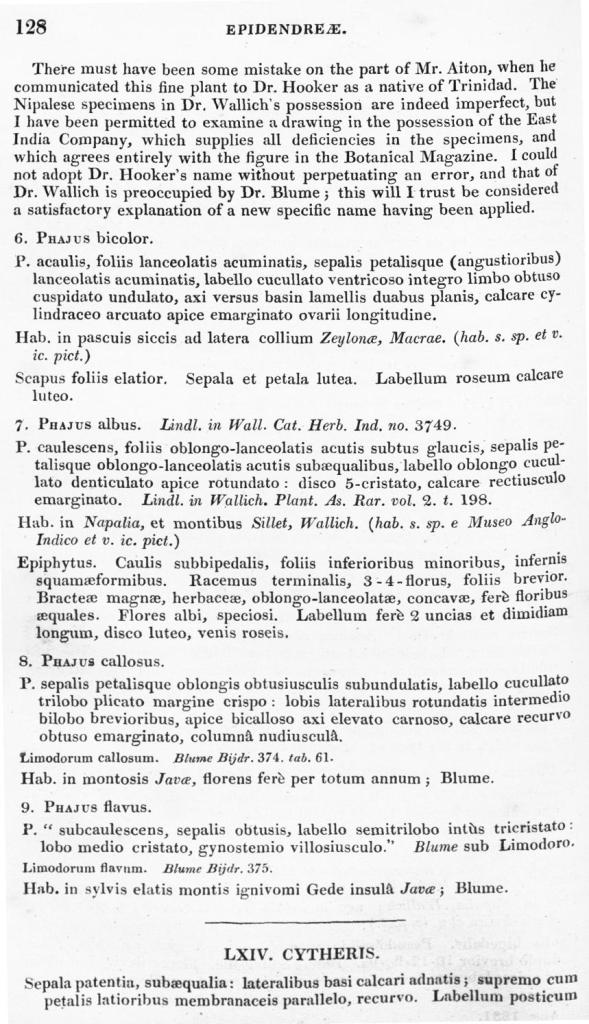
1831 Carl Ludwig Ritter von Blume published in Louis van Houttes Flore des serres et des jardins de l’Europe a drawing of a beautyful Phaius grandiolius he called var superbus:
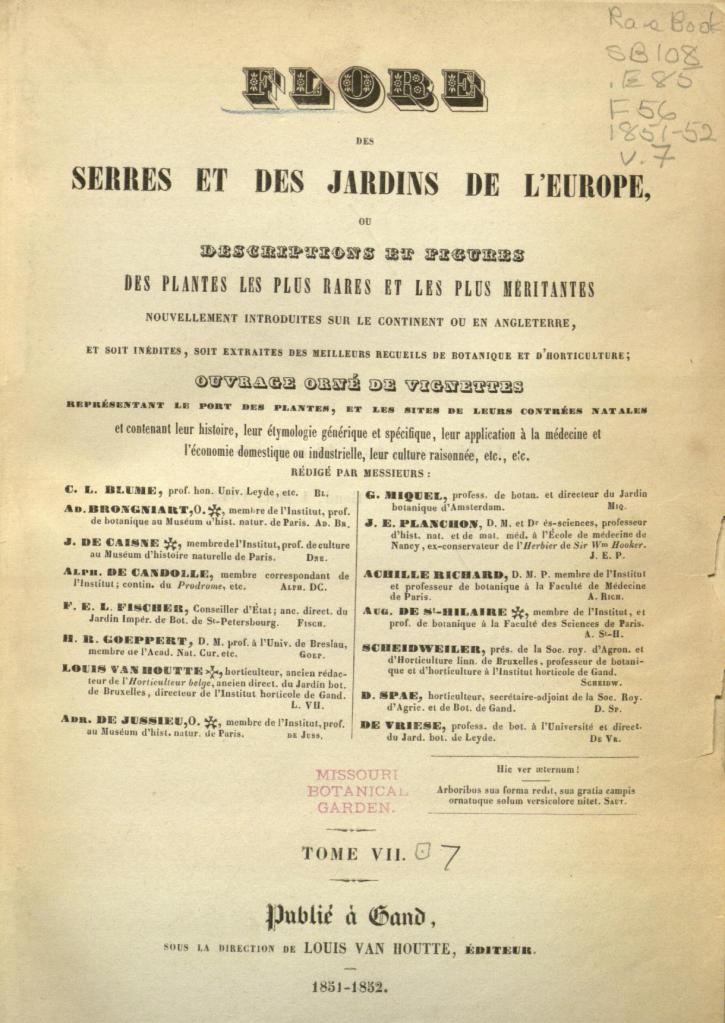
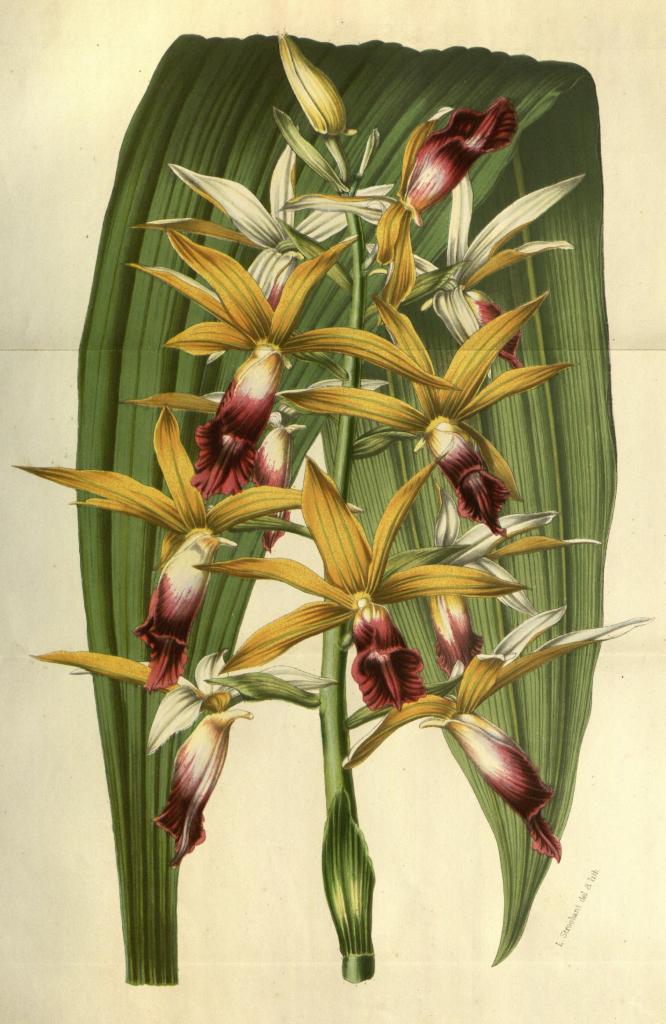
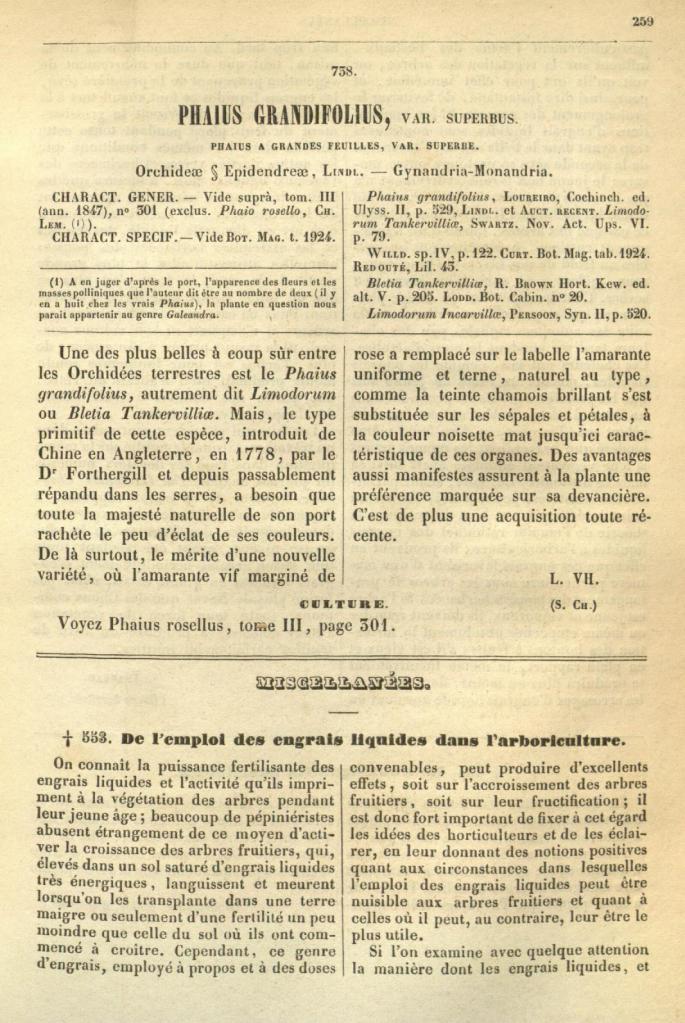
Finally, in 1856, Carl Ludwig Ritter von Blume introduced the name Phajus tankervilii in his Museum botanicum Lugduno-Batavum. He did not yet include Joannis de Loureiros Phajus grandifolius to the new species name. This is most likely due to the original description of Phaius grandifolius: Planta terrestris, caule sesquipedali, simpilcissimo, tereti, crasso, erecto – A terrestrial plant with a stem a foot and a half long, very simple, smooth, thick, upright. However, today it is accepted that Phaius tankervilleae and Phaius grandifolius represent the same species.
